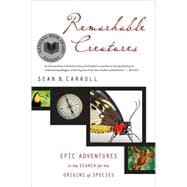
Note: Supplemental materials are not guaranteed with Rental or Used book purchases.
Purchase Benefits
What is included with this book?
SEAN B. CARROLL is professor of molecular biology and genetics and an investigator with the Howard Hughes Medical Institute at the University of Wisconsin. He is the author of The Making of the Fittest and Endless Forms Most Beautiful: The New Science of Evo Devo, a finalist for the Los Angeles Times Book Prize and a best science book of the year in Discover magazine and USA Today.
The New copy of this book will include any supplemental materials advertised. Please check the title of the book to determine if it should include any access cards, study guides, lab manuals, CDs, etc.
The Used, Rental and eBook copies of this book are not guaranteed to include any supplemental materials. Typically, only the book itself is included. This is true even if the title states it includes any access cards, study guides, lab manuals, CDs, etc.